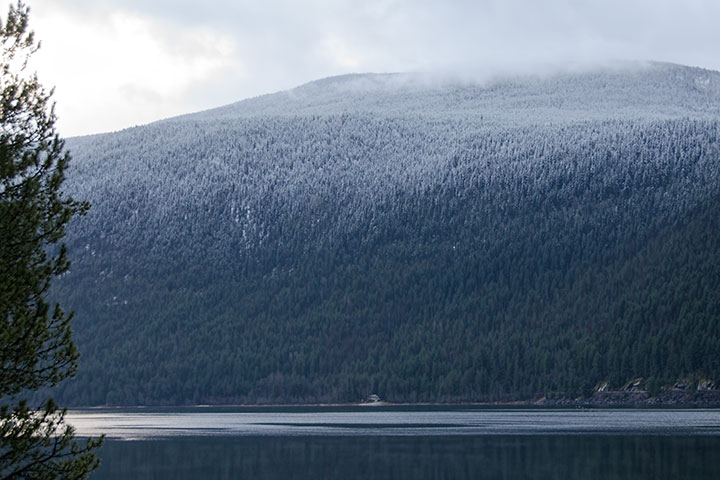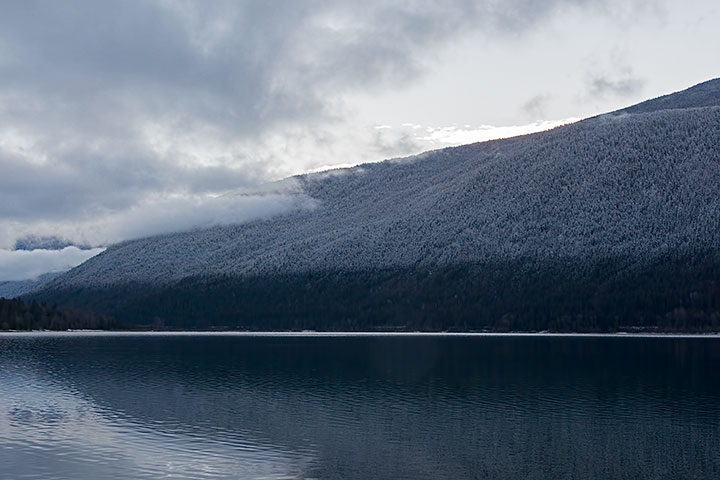If one is walking through a whitened forest on a mountainside, it is easy to tell if the trees are covered with snow or rime. From a distance, though it is often more difficult as details vanish and both merely look white.
Following my last posting about the appearance of the snow to rain transition in the air, it seemed appropriate to treat the transitions on the surface which can be seen with either fresh snow or fresh rime. Later in the season, the whole mountainside will be covered with snow and the transitions I discuss here will not be evident.
The first picture shows snow on the mountainside. Snow is made up of large ice crystals that fall from the cloud. When they fall below the melting level in the atmosphere, the smaller ones melt quickly while the large ones keep falling a bit farther. The result is that the transition between snow and no snow on the mountainside is gradual.

Rime comes about in a different way. A cloud of water drops has been drifting alongside the mountain. Some of the cloud drops bump into tree branches and are collected. Below the melting level, the droplet temperature is above 0 °C and the drops merely wet the tree. Above the melting level, the droplet temperature is below 0 °C and is thus supercooled. When that droplet hits the tree, it promptly freezes to give rime. The visual consequence is a rather sharp transition from no rime below the 0 °C isotherm to rime above that looks different than the gradual transition resulting from falling snow.


I wondered…thanks Alistair.